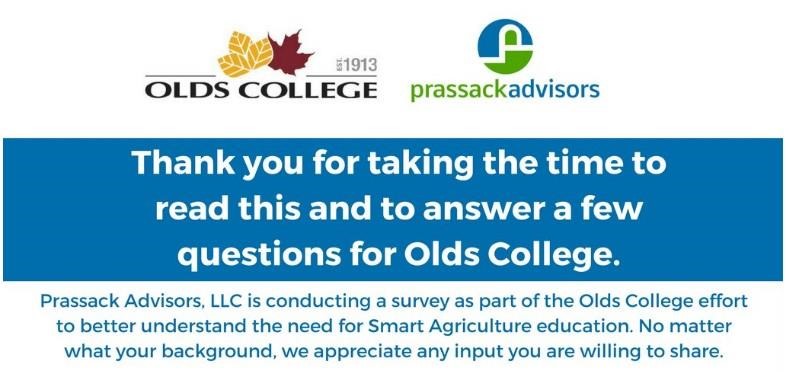Your input can help to guide the development of smart agriculture education, future course programming and industry partnerships.
Prassack Advisors, LLC is conducting a short survey as part of an Olds College Smart Agriculture - Market Evaluation and Opportunity Study.

CLICK THE LINK BELOW TO BEGIN THE SURVEY:
https://www.surveymonkey.com/r/Olds-College-Smart-Ag
NOTE:
Questions about the survey or the smart agriculture study, can be sent to Dale Steele at dale@prassackadvisors.com.
To learn about Olds College engagement of Prassack Advisors and MDB Insights to conduct this research click on the link Smart Agriculture Market Evaluation and Opportunity Study.
